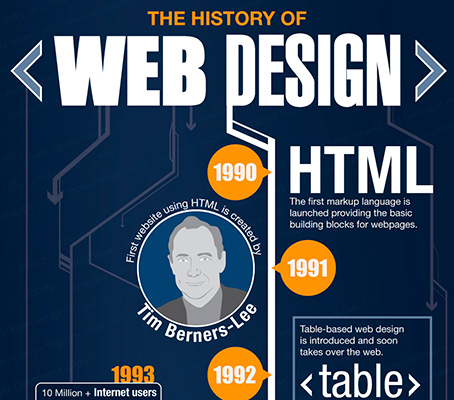Fundamental Elements Of Web Design: Guidelines For Establishing A User-Centric Site
Fundamental Elements Of Web Design: Guidelines For Establishing A User-Centric Site
Blog Article
Web Content Develop By-Le Ehlers
When it concerns internet site design, guaranteeing user-friendliness is vital. From responsive layout to streamlined navigating, every component plays a vital duty in developing a website that caters to your audience's demands. Yet what about the finer information that can make or damage an individual's browsing experience? Keep tuned as we discover some often-overlooked suggestions that can elevate your web site's usability to the next degree, making it genuinely stand out in the electronic landscape.
Importance of Responsive Style
Receptive style is a vital aspect of contemporary site growth. Guaranteeing your web site is receptive means that it can adapt to different screen sizes and tools, providing a seamless experience for individuals.
With the boosting use of mobile phones and tablet computers to access the net, having a responsive layout is crucial for reaching a larger audience. It assists in improving customer experience by making your website very easy to navigate and keep reading any tool.
In addition, receptive design can positively affect your online search engine rankings, as online search engine like Google prioritize mobile-friendly sites. By having a receptive layout, you're additionally future-proofing your site, as new gadgets with varying display sizes continue to arise.
Simplify Navigating Framework
To boost individual experience and promote easy accessibility to details on your internet site, enhancing the navigation framework is critical. When creating affordable web design , concentrate on producing a clear and instinctive navigating menu that helps visitors find what they're seeking promptly.
Restriction the variety of menu items to the basics, organizing related web pages with each other to avoid overwhelming customers. Use detailed labels that plainly indicate the content of each web page, making it less complicated for individuals to comprehend where each web link will certainly take them.
Think about implementing dropdown food selections for subcategories to prevent cluttering the primary navigation bar. Additionally, include a search bar prominently on the page for users that prefer looking for particular info.
Focus on mobile responsiveness in your navigating layout to guarantee very easy accessibility on all devices.
Enhance Web Page Lots Rate
Improving page load rate is important for preserving site visitors on your internet site. Slow-loading web pages frustrate users and can bring about high bounce rates. To maximize web page load rate, begin by maximizing images. Compress search engine optimization advertising without endangering top quality to decrease their data sizes.
In addition, enable browser caching to keep often accessed sources locally, speeding up lots times for returning visitors. Minify CSS, JavaScript, and HTML documents by eliminating unneeded characters, comments, and formatting, boosting load rate.
Think about using a web content distribution network (CDN) to disperse your internet site's content across multiple servers worldwide, lowering latency for users accessing your site from various locations. Lastly, limit using third-party manuscripts and plugins, as they can substantially influence lots times.
Verdict
Finally, by incorporating responsive style, streamlining navigating, and maximizing page tons rate, you can produce a straightforward web site that interest a broader audience and boosts individual experience. These essential elements ensure that visitors can conveniently accessibility and browse your website throughout different tools, leading to raised engagement and complete satisfaction. By focusing on these vital aspects, you can construct an effective site that keeps individuals returning for even more.
